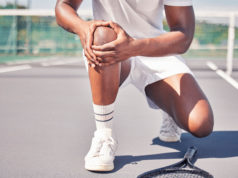Tips to get back into tennis shape
Tennis is a demanding sport that requires a combination of strength, agility, and endurance. Preparing your body for the challenges ahead is essential to prevent injuries.
By Mark Kovacs, PhD, FACSM, CSCS, CTPS, CEO, Kovacs Institute; Executive Director, International Tennis Performance Association
As spring approaches, tennis enthusiasts eagerly anticipate the return of warmer weather and more tennis. To make the most out of this season, it’s crucial to ensure that your body is in the best tennis shape possible. Here are a few of the most important tips to get your body back in “tennis shape” after the winter months.
Understanding the importance of physical conditioning
Improving your physical conditioning requires a ramp-up period. One of the biggest mistakes we see is people going from 0 to 100 without ramping up the intensity and volume of training/playing in a measured and appropriate way. Tennis is a demanding sport that requires a combination of strength, agility, and endurance. Preparing your body for the challenges ahead is essential to prevent injuries and to enhance overall gameplay. Start slow and ramp up gradually.
Strength training for tennis excellence
One key aspect that many people do not focus enough on is strength training. The data is clear: Appropriate and specific strength training is one of the best ways to help with moving better on court, but also assists in reducing the risk of injury. This is even more important as a tennis player ages. Focus on exercises that target your core, legs, and shoulders to improve your power and stability during your groundstrokes, volleys, and serves. The Kovacs Institute provides specialized strength training programs designed specifically for tennis players. These programs, backed by scientific research, aim to enhance muscular strength, power and endurance, giving players a competitive edge on the court.
Agility & footwork: Kovacs Academy’s proven techniques
Another crucial element in tennis conditioning is agility and footwork. It is important for tennis players to ramp up lateral movement training and focus on quick and explosive directional changes. This is the one big area that many recreational players do not focus on enough and where we see the most post-match soreness and issues with injuries. This is due to what is called unaccustomed eccentric loading, which is a major cause of post-tennis soreness. Incorporating agility training into your program can be a game-changer for performance, but also for helping you feel better after your matches.
 Endurance: The key to consistent performance
Endurance: The key to consistent performance
Endurance often is underestimated in tennis, yet it plays a pivotal role in sustaining consistent performance throughout a match. Most recreational tennis players are not in the best aerobic shape. The more well-trained your aerobic conditioning, the easier it is to last in long matches and to recover between points. Training with work to rest ratios — short bursts of higher-intensity exercise followed by short rest periods — that mimic the intensity and duration of a tennis match is a great way to get the most out of your training sessions. We love 10-20 seconds of work to a 30-40 seconds of rest routine. Doing 10-20 sets of this type of conditioning can be a time friendly and productive way to train.
Elevate your game with Kovacs Institute Insights
In conclusion, as all of us as tennis enthusiasts eagerly await the arrival of spring and move toward the warmer summer months, now is the time to get your body ready to play at a high level and also help to reduce the likelihood of post-match discomfort so that you can stay on the courts longer and enjoy this great game.




